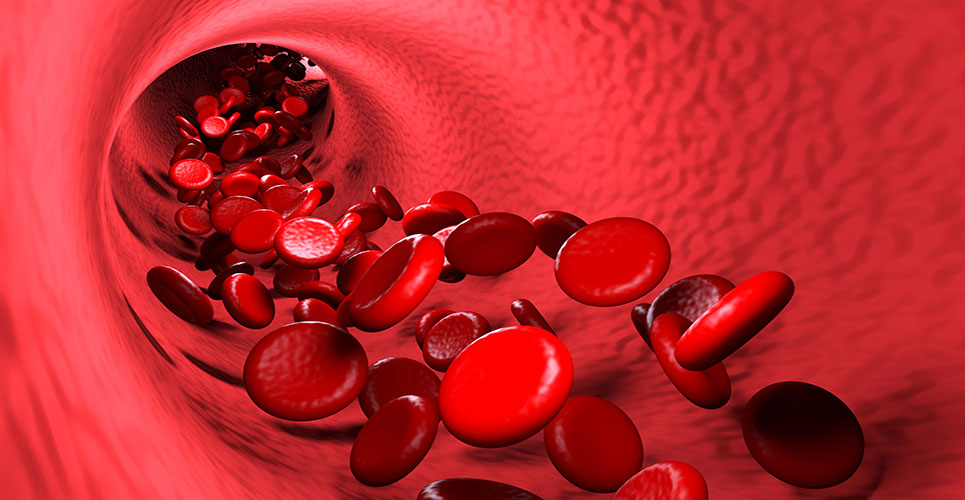teaser
Data from the Phase III SABRINA trial presented at the annual meeting of the American Society of Hematology (ASH) in Atlanta (BO22334) could mean that patients living with a form of blood cancer in the UK may soon be able to receive their treatment more quickly.
A new subcutaneous (SC) injection of MabThera, used for the treatment and maintenance of non-Hodgkin lymphoma (NHL), can be administered in approximately five minutes instead of via intravenous (IV) infusion, which usually takes over two hours.(1,2)
The SABRINA trial compared the MabThera® SC formulation with MabThera® IV in patients with previously untreated follicular lymphoma, a type of NHL. The trial met its final end point, demonstrating non-inferiority of MabThera® serum concentration and also comparable efficacy for SC.(1)
This is good news for eligible patients as SC administration enables the delivery of MabThera® in approximately five minutes versus over two hours without compromising efficacy and safety, (1,2) saving patient time in hospital receiving their treatment. It could also benefit the NHS by freeing up capacity in chemotherapy suites.
The results showed that the objective response rate (the percentage of patients whose cancer shrinks by over 50% or disappears) was 90.5% (95% CI: 80.4, 96.4) in the SC arm and 84.4% (95% CI: 73.1, 92.2) in the IV arm. Complete response (CR/CRu) rates were 46.0% (29/63 pts, 95% CI: 33.4, 59.1) for the SC arm and 29.7% (19/64 pts, 95% CI: 18.9, 42.4) for the IV arm. Stable and progressive disease rates were similar in each arm.(1)
Based on this data, Roche has applied for an updated licence with the European Medicines Authority to allow eligible NHL patients in the UK to receive MabThera® subcutaneously.
Dr Andrew Davies, Consultant in Medical Oncology at the University of Southampton, commented that “This is a new formulation of a drug we are very familiar with and have been using for many years. The SABRINA study demonstrates that rituximab subcutaneous injection is equivalent to rituximab IV and has a comparable safety profile. In the near future patients will be able to benefit from shorter, more convenient and potentially less complicated hospital visits. The greatly reduced administration time is not only a big plus for NHL patients, but also has the potential to ease the capacity burden in busy chemotherapy day units and allow more patients to be treated. In Southampton, we have observed a high degree of patient preference and satisfaction with this new formulation of rituximab.”
After a median follow-up of approximately nine months, the overall safety profile for MabThera® SC was as would be expected for IV administration, with no new or unexpected adverse events. Adverse events include neutropenia, pruritus, chills, injection site erythema and vomiting.(1)
Treatment involving MabThera® is the standard of care in its licensed indications of follicular lymphoma and diffuse large B-cell non-Hodgkin’s lymphoma.(3–5)
MabThera® SC represents a significant advance in the way that NHL cancer treatment is delivered. Through its combination with a recombinant human enzyme called hyaluronidase, penetrability of the layer of tissue under the skin is temporarily increased, facilitating injection and absorption of MabThera® into the body. In addition to reducing the time that a patient is required to spend receiving their treatment in hospital, the ready to use formulation may also reduce pharmacy time compared to IV, as the preparation is less complex, compared to intravenous doses of MabThera®. MabThera® is currently licensed in an IV formulation only.
References
- Davies. A et al. Pharmacokinetics (PK), Safety and Overall Response Rate (ORR) Achieved with Subcutaneous (SC) Administration of Rituximab in Combination with Chemotherapy were Comparable to Those Ahieved with Intravenous (IV) Administration in Patients (pts) with Follicular Lymphoma (FL) in the First-Line Setting: Sttagge 1 Results of the Phase III SABRINA Study (BO22334). Presented at the American Society of Hematolgy Annual Meeting 2012 Abstract # BO22334
- Roche data on file RXUKDONF00147
- Dreyling. M. On behalf of the ESMO Guidelines Working Group. Newly diagnosed and relapsed follicular lymphoma: ESMO Clinical Practice Guidelines for diagnosis, treatment and follow-up. Ann Oncol (2011) 22 (suppl 6): vi59-vi63.
- British Committee for Standards in Haematology. Guidelines on the investigation and management of follicular lymphoma. September 2011. Available at: http://www.bcshguidelines.com/documents/FL_BCSH_Sept_2011_FINAL.pdf
- MabThera (rituximab) Summary of Product Characteristics. http://www.medicines.org.uk/emc/medicine/2570/SPC/Mabthera+100mg+and+500mg+concentrate+for+solution+for+infusion/ Last accessed 14.11.12
